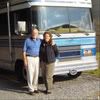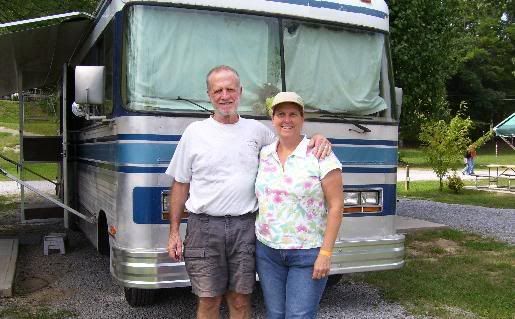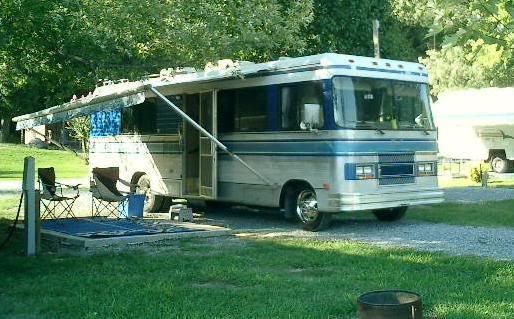Go to...  | Start A New Topic  | Search  | Notify  | Tools  | Reply To This Topic  |  |
My 85 has a single alternator pulley. It is located on upper right side of engine as bill h. stated. ------------------ Ronnie 1985 28' P-30 454  | ||||
|
 6/12 6/12Formally known as "Humbojb"  |
Ronnie and Bill, thanks for your help. Bought an 80 amp alternator from NAPA with a lifetime warrenty and will have the old one rebuilt to use as a spare. Now, the trip to Tennessee to install--maybe the weekend after Thanksgiving. Jim | |||
|
 6/12 6/12Formally known as "Humbojb"  |
Well, all's well that ends well! After leaving the Barth in Tennessee last October, I finally went over there a few weeks ago to help out with the daughter who is 15 weeks with triplets--due sometime early this summer. And one warm day, the son-in-law, jet pilot, aka mechanic, and I put a new alternator on the 28' 85 Regal. Low and behold, the Barth fired right up, putting out 15 amps, and that was it. Seems as though the guy who fixed my leaking rear main seal last summer, managed to put the wire from the alternator to the isolator over the top of a metal brace. It wore through and just coincidentally blew out the diode in the alternator as I was pulling into the kids place in Tennessee last September. I had used the aux battery switch ever since and the converter kept all three Optimas charged nicely all this time. No damage to the aux battery swithch, the isolator or anything else. Today we hopped in the Barth and drove non- stop to North Carolina and it didn't miss a beat. A hearty thanks for all that gave advice on this problem. Jim
| ||||||||||||
|
| First Month Member |
Jim, the guy did you a favor by causing the isolator to blow. Get rid of it and use the isolator relay exclusively. Diodes, with the exception of Schottky devices, cause a drop of at least .7 volts. That can cause dreadfully slow recharging of the chassis battery bank. I believe I have posted before on the preferred method of switching a relay for that purpose. . 84 30T PeeThirty-Something, 502 powered | |||
|
 6/12 6/12Formally known as "Humbojb"  |
Bill, I must have mis-spoken. The isolator was ok, just the alternator blew. But what do you think about that new set up that Bill NY showed in a fairly recent post? Bill NY, where is that post? I searched under isolators and didn't find it. Jim
| ||||||||||||
|
"Host" of Barthmobile.com 1/19 1/19 |
Big switch Latching relay Most people, like me, believe that their deep cycle batteries should be drawn down to about 60% to 80% every now and then. I don't believe, like some, that this should happen all of the time. There is a good debate on the merits of both to keep sulfation from happening. If you check your water level it's not that big of deal which theory you subscribe too. Most people don't check their water level and this is where problems happen. I like keeping my batteries charged. It minimizes the chance of blowing or overloading an alternator. Now if you're recharging off of a battery charger (generator w charger) then on occasion allow the batteries to drop down to 60% & 80%. I expect other opinions on this so fire away... The latching relay makes and breaks contact for the coach batteries or anything else that you may want on alot of time or that you may worry about draining your batteries dead when not in use. If you want a great way to shut off your batteries and change the charge load around then the "big switch" is for you. It removes the isolator and gives you a great charge rate without the failure rate of an isolator. Isolators and relays are prone to failure when overheated. The majority of these failures are a result of low batteries trying to recharge thru an isolator and or relay. The big switch if spec'd right is almost bullet proof. The problem with the big switch is location in relation to batteries. If your coach and starting batteries are close then this is great, use the top picture. If not then the added run of larger cables to different batteries may not work out well. In this case the big switch, like in the bottom pic, may work out better. In that case you only need to rework the 3 cables that went to the isolator. The exact mounting location would, more likely than not, be close to where "all of the other wires to be hooked up here" are located. You could also hook up a junction point and mount in another location too. It's hard to give a generic description on what really would work better for you. I like doing things that are less likely to fail and allows the operator to enjoy, instead of diagnosing, their coach or truck.
| |||||||||||||||
| ||||||||||||||||
Captain Doom |
A latching relay works - and is installed - the same as a Big Switch - the difference is that it can be operated remotely. Most motorhomes - for economy - are equipped with a "hot" relay. A latching relay draws power through its coil only when the position is changed, then the latching coil is disconnected. A hot relay has an "off" position and an "on" position, the latter drawing current through the coil to keep it pulled in. Most are relatively trouble-free. The advantage of the hot relay is that it can very simply be used to energize a circuit when its coil is powered. An example is the relay that switches from internal (generator) to external (landline) power when hooked up to 120vac service. The disadvantage is that when "on", it always draws current, and this partially defeats the advantage of something like solar cells, because if relay is "on", as it'll draaw current (away from the battery). A latching relay (as can a Big Switch) can be used in place of an isolator, but the position has to be switched manually (without additional, usually complex) circuitry, but it's more efficient than the isolator (which suffers a voltage drop across its diodes). The other issue with either a Big Switch (except for certain configurations) or a latching relay, the engine has to be stopped before switching, otherwise when switching (between positons), the alternator diodes could be blown. Rusty '94 28' Breakaway: MilSpec AMG 6.5L TD 230HP Nelson and Chester, not-spoiled Golden Retrievers Sometimes I think we're alone in the universe, and sometimes I think we're not. In either case the idea is quite staggering. - Arthur C. Clarke It was a woman who drove me to drink, and I've been searching thirty years to find her and thank her - W. C. Fields | |||
|
"Host" of Barthmobile.com 1/19 1/19 |
That's why the big diesel one (lower pic) works out slightly better. Most of these big switches are mounted in the battery boxes. Not very easy for you to switch while driving. Now if your looking to kill off all power draw when not in use then use the top pic. Just don't do anything crazy like switching the banks while revving the engine. Common sense would need to be followed. Like don't leave your hoses and electrical hooked up while pulling away from a site or take the gas hose out of the fuel tank before pulling away from the pump etc.. You can no load full field alternators without poping the diode trio bank. The problem lies with switching while reved up and low voltage at the batteries. This is when they are "more prone" to failure. Look at most isolators that fail. The alternator stud is brown and the coach stud is discolored. Overheating from very low voltage at the coach batteries and high amps from the alternator.
| |||||||||||||||
| ||||||||||||||||
Captain Doom |
I think I'll make some notes here.... Rusty '94 28' Breakaway: MilSpec AMG 6.5L TD 230HP Nelson and Chester, not-spoiled Golden Retrievers Sometimes I think we're alone in the universe, and sometimes I think we're not. In either case the idea is quite staggering. - Arthur C. Clarke It was a woman who drove me to drink, and I've been searching thirty years to find her and thank her - W. C. Fields | |||
|
| Powered by Social Strata | Page 1 2 3 4 |
| Please Wait. Your request is being processed... |
|
This website is dedicated to the Barth Custom Coach, their owners and those who admire this American made, quality crafted, motor coach.
We are committed to the history, preservation and restoration of the Barth Custom Coach.
We are committed to the history, preservation and restoration of the Barth Custom Coach.





